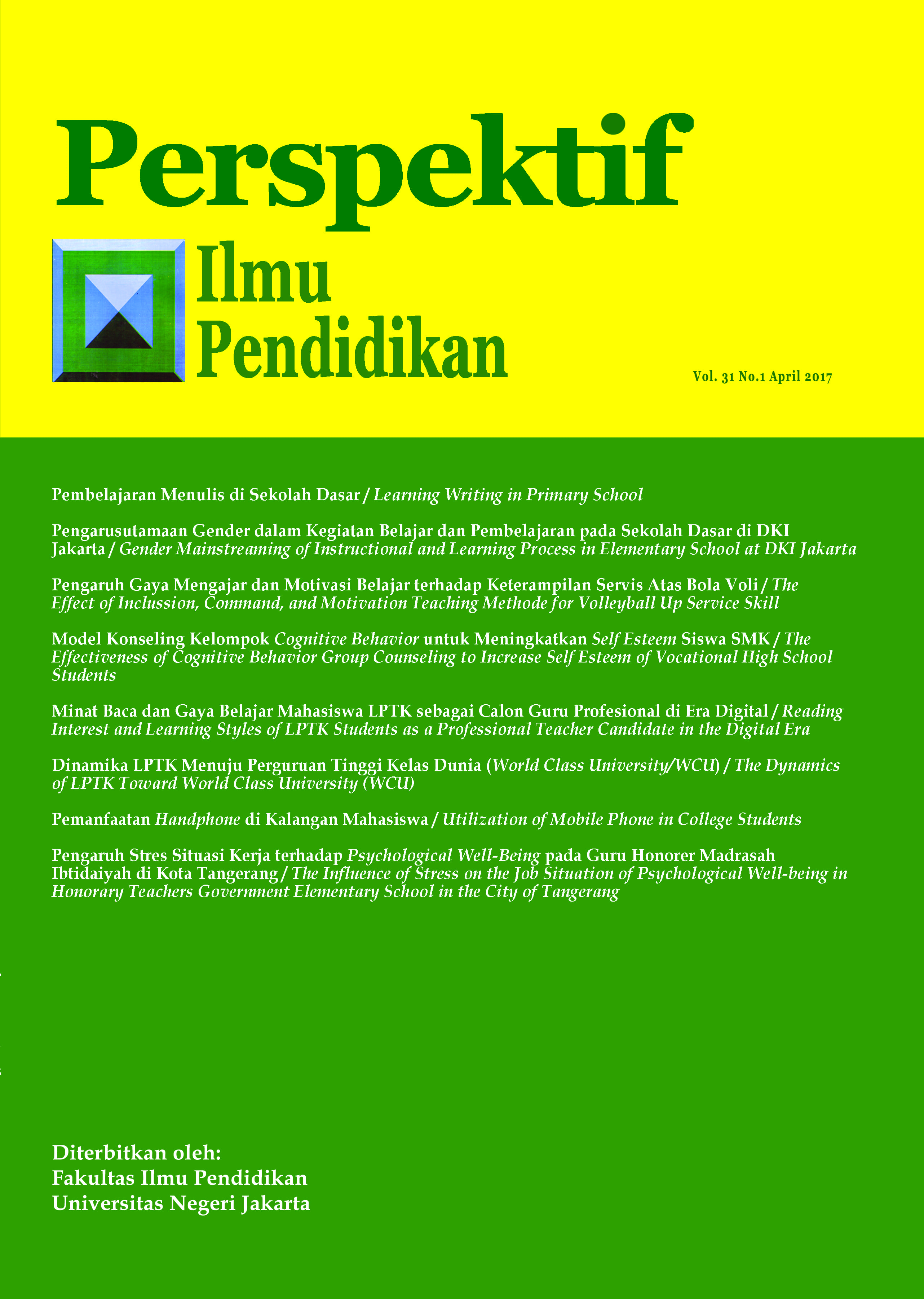PENGARUH GAYA MENGAJAR DAN MOTIVASI BELAJAR TERHADAP KETERAMPILAN SERVIS ATAS BOLA VOLI
DOI:
https://doi.org/10.21009/PIP.311.3Keywords:
teaching style, inclusion, command, volleyball up serviceAbstract
The purpose of this research is to determine the more effective teaching style between the application of inclusions teaching styles and command teaching styles for skills of volleyball up service if each of them is associated with learning motivational factors in 277 Government Junior High School, Jakarta. The study was conducted from May to June 2016. This research used an experimental method and a treatment by level 2 x 2 design. The research conducted in 277 Government Junior High School, Jakarta including all students of grade VIII with total of 252 students spread in 7 classes. Employing cluster sampling technique, this research selected two classes to be given treatments or learning programs. One class consisted of 36 students making the total sample to be 72 people. The instrument used in this research was a volleyball up service test. The conclusions of this study are (1) overall, there are different volleyball up service skills among the students who are taught by inclusions teaching style and students who are taught by commands teaching style; (2) there are interactions between teaching style and motivation to learn with the skills of volleyball up service; (3) for the group of students who have high learning motivation level, the up service skills on a volleyball higher when taught by the inclusions teaching style; and (4) for the group of students who have low motivation learning levels, skills on the volleyball serve higher when taught by the commands teaching style.
Downloads
Published
How to Cite
Issue
Section
License
Authors who publish with this Journal agree to the following terms:
- Author retain copyright and grant the journal right of first publication with the work simultaneously licensed under a creative commons attribution licensethat allow others to share the work within an acknowledgement of the work’s authorship and initial publication of this journal.
- Authors are able to enter into separate, additional contractual arrangementfor the non-exclusive distribution of the journal’s published version of the work (e.g. acknowledgement of its initial publication in this journal).
- Authors are permitted and encouraged to post their work online(e.g. in institutional repositories or on their websites) prior to and during the submission process, as it can lead to productive exchanges, as well as earlier and greater citation of published works.
-
Users/public use of this website will be licensed to CC BY-NC-SA Creative Commons Attribution-NonCommercial-ShareAlike 4.0 International License












